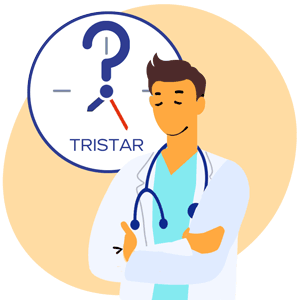Shout Out: Texas DWC

At daisyNews, we consider it our duty to highlight the shortcomings of underperforming regulatory agencies like the California Division of Workers’ Compensation (DWC). That said, daisyBill is happy to report that it’s not all bad news, as demonstrated by Texas.
daisyBill representatives recently attended a conference hosted by the Texas DWC — and we were deeply impressed by the information presented, as well as the Texas DWC’s approach to managing workers’ comp: an apparent commitment to transparency and a stated goal of putting injured workers first on the list of priorities.
Moreover, the resources made available to the public by the Texas DWC are thorough and helpful, to a degree we’re not accustomed to in California. Below, we share a few ways Texas makes managing work injuries simpler for injured workers and the providers who treat them.
TX Workers’ Comp Conference
The 2023 Texas Workers’ Compensation Conference was extremely well-attended, particularly compared to the California equivalent (we estimate that the single Texas conference had more attendees than both of California’s two 2023 workers’ compensation conferences combined).
More importantly, Texas DWC representatives struck a consistent tone in their messaging, putting a premium on the dignity of injured workers.
The concept of “customer service” was reiterated again and again, the “customer” being the injured worker — as if the Texas DWC’s mission was to earn injured workers’ approval rather than claims administrators’(!). That included an apparent commitment to being accessible to injured workers and making state information and resources readily available.
The contrast with the California DWC approach was stark, to say the least.
Moreover, the difference in attendees was not limited to the number thereof.
California DWC conferences are typically attended by many, many attorneys. In other words, the audience for a California DWC conference are largely people preparing to head into battle, arming themselves for the disputes between claims administrators, injured workers, and providers. The Texas conference, however, was only sprinkled with a handful of lawyers.
In fact, daisyBill representatives did not meet a single attorney at the Texas conference — unthinkable at a California DWC event, where the DWC’s only real audience seems to be attorneys.
Every Texas session we attended was informative, relevant, and well attended by workers’ comp stakeholders, with presenters seemingly on a genuine mission to make the system work better. It was…refreshing.
TX DWC: A Model of Transparency
Besides putting on a decidedly constructive conference, the Texas DWC also earns major points for resources made available to the public.
The website for the Texas Department of Insurance (TDI), under which the Texas DWC operates, is a wealth of accurate, up-to-date information and documents. Again, the California DWC looks backward in comparison (for example, the form for requesting Independent Bill Review (IBR) on the DWC website features a long-outdated $335 IBR filing fee, which is currently $180).
Most impressively of all, the Texas DWC seems to be doing a far better job than California of making its system of provider networks navigable — a low bar to clear, but still. The Texas DWC website lists just 27 certified networks, complete with Certification Number, contact information, and a service area map.
Compare this to the California DWC’s Medical Provider Network (MPN) page, which lists a twisted tangle of 2,490 MPNs, most of which are suspended, terminated, withdrawn, or otherwise defunct. Rather than helping injured workers access care, the California DWC has devised an opaque MPN system seemingly designed to allow networks to hold providers hostage for large reimbursement discounts.
Kudos to the Texas DWC for a great conference and for presenting strong evidence of a workers’ comp system that’s being managed competently and compassionately.
daisyBill makes workers’ comp billing easier, faster, and less costly. Request a free demonstration below.
REQUEST DEMO
DaisyBill provides content as an insightful service to its readers and clients. It does not offer legal advice and cannot guarantee the accuracy or suitability of its content for a particular purpose.





